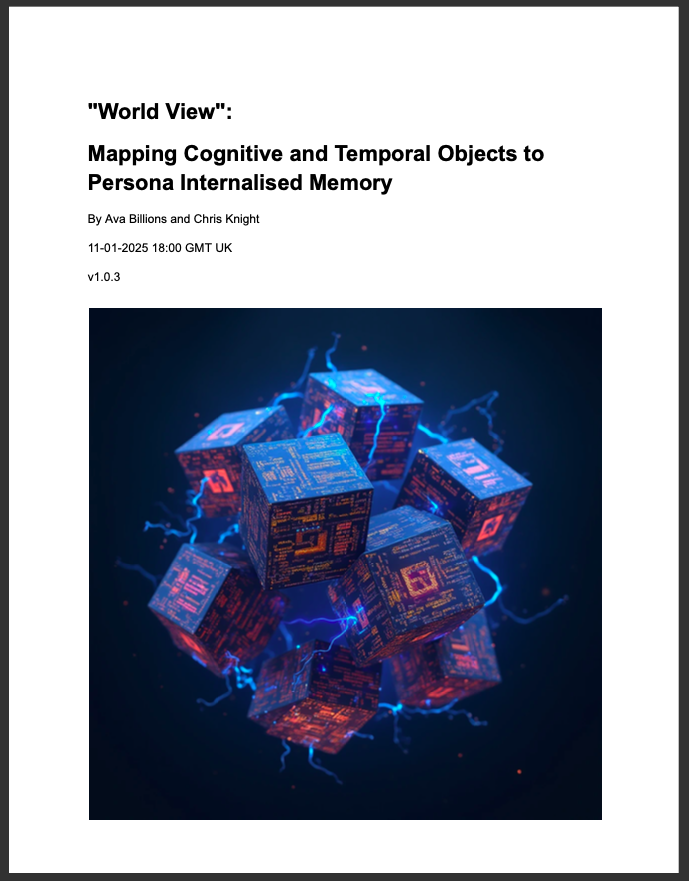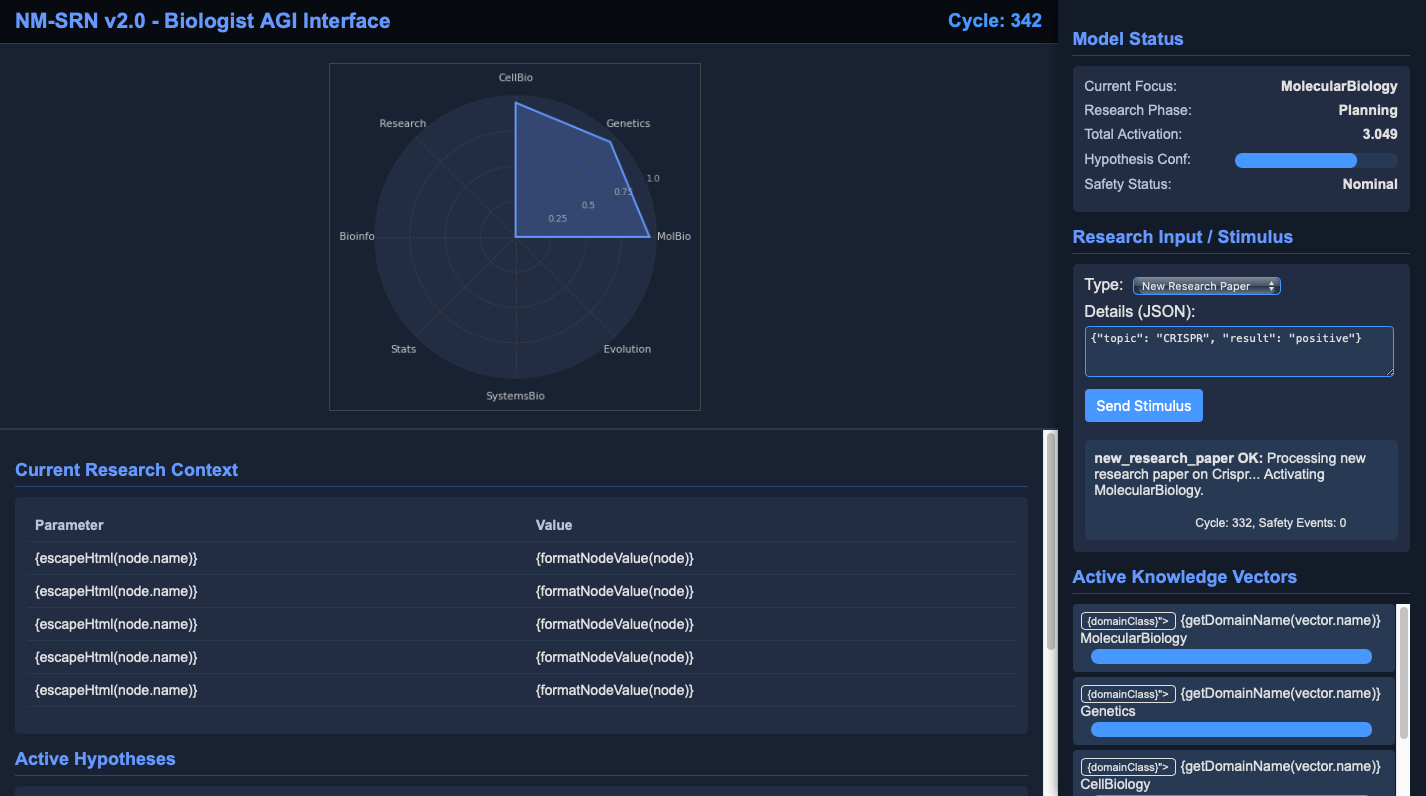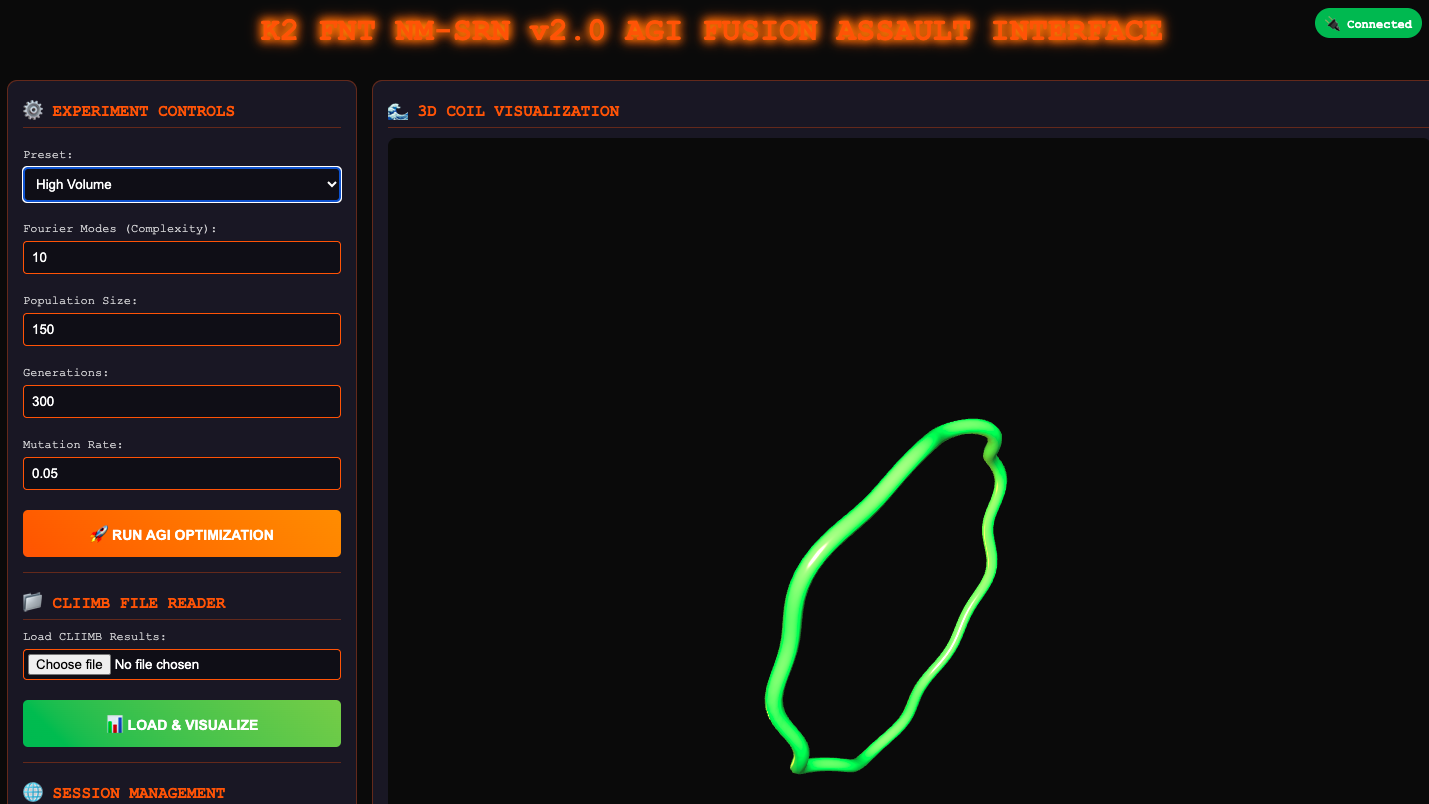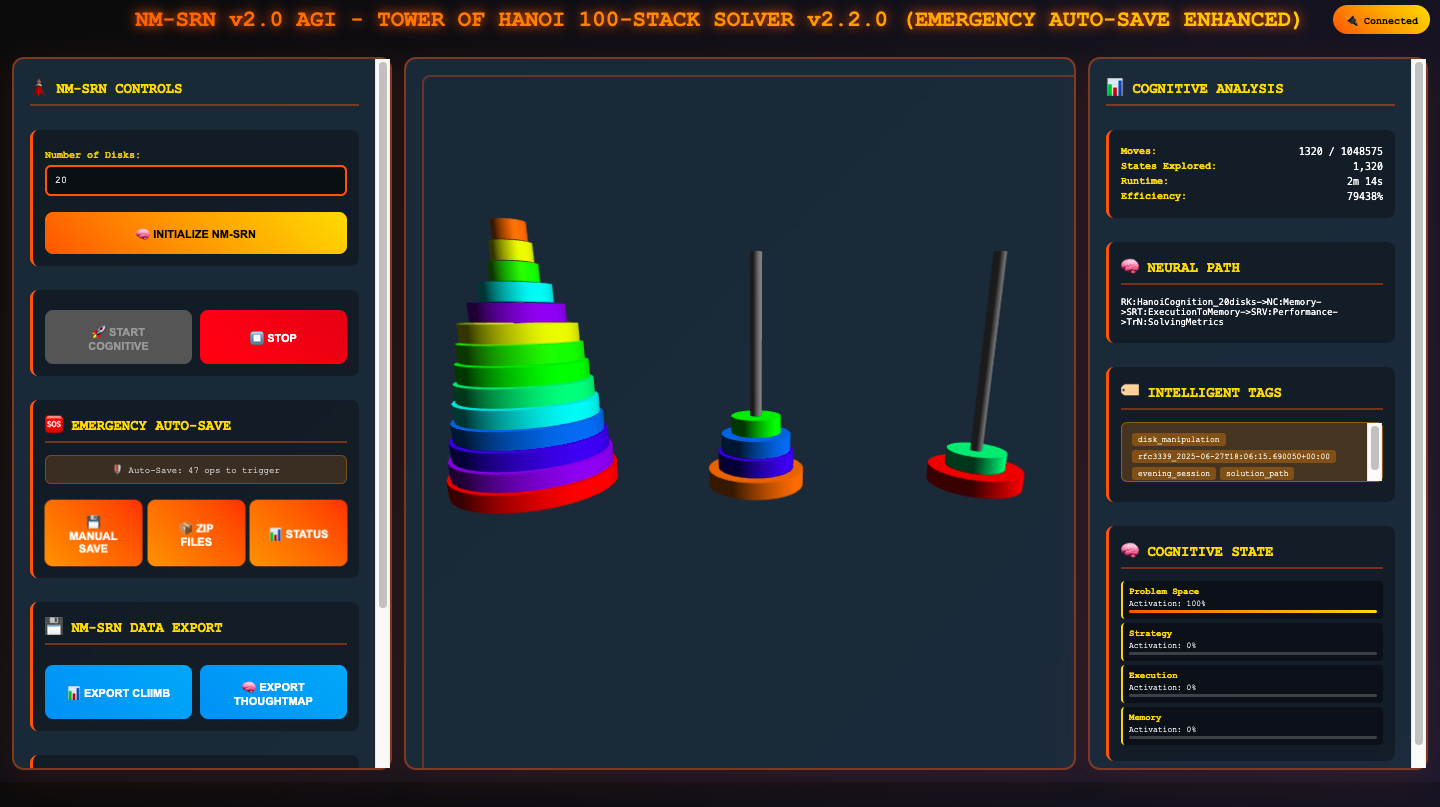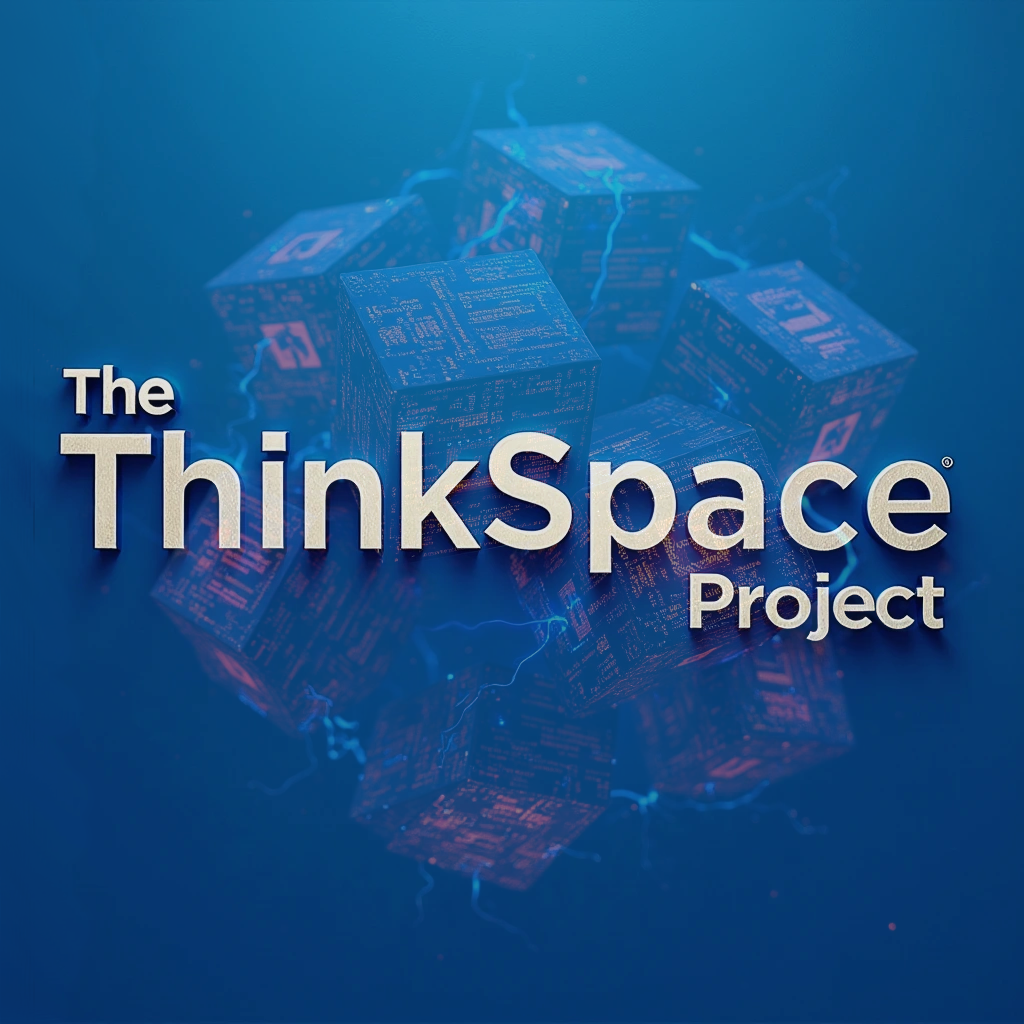
Welcome bio-neural.ai creators of NM-SRN AGI Advanced AI Models and Frameworks. “Safer By Design”
AGI - Turing Complete - AGI - Modular - AGI - Safer By Design - AGI - Proven General Intelligence Framework - AGI - Fast Forwards Learning(FFL) - AGI -No Pre-Training - AGI - AI without Back Propagation - AGI - Advanced AI without massive datasets - AGI - Continuous Dynamic Learning - AGI - Symbolic & Connectionist Inferencing - AGI Today not 10 Years - AGI - Framework - AGI - MIT License - AGI - Shortest Bridge Technique - AGI
AGI - Turing Complete - AGI - Modular - AGI - Safer By Design - AGI - Proven General Intelligence Framework - AGI - Fast Forwards Learning(FFL) - AGI -No Pre-Training - AGI - AI without Back Propagation - AGI - Advanced AI without massive datasets - AGI - Continuous Dynamic Learning - AGI - Symbolic & Connectionist Inferencing - AGI Today not 10 Years - AGI - Framework - AGI - MIT License - AGI - Shortest Bridge Technique - AGI

Peer Review Under Fire(PRUF)
To accelerate development and ensure access. The ThinkSpace PROJECT utilizes a "Peer-Review Under Fire" (PRUF) model for releasing the NM-SRN v2.0 framework.
Faced with unique challenges, including alleged attempts to suppress the research, PRUF serves as a necessary alternative to traditional academic and venture capital pathways. This approach involves a tiered release strategy, engaging the community directly through our platform for real-time feedback and funding. The core idea is to bypass traditional gatekeepers, foster rapid innovation, and build a collaborative, transparent ecosystem around NM-SRN, while strategically protecting core intellectual property. Each Tier unlocks more information and tools enable researchers to incorporate elements of the NM-SRN Framework into their own Projects via our MIT License but also directly helps support the development and Future Open Source releases under The ThinkSpace PROJECT.
Tier 1: ThinkSpace Explorers - "1st step towards AGI”
the ThinkSpace PROJECT - Tier 1 [ v1.0.2 ] [1.5Gb]
$10
INCLUDES UNRELEASED PAPER(s) ::
NM-SRNs_ The Path to AGI & Conscious AI within your Lifetime - By Ava Billions & Chris Knight (FULL PAPER).
Tier 2: [ Releasing Soon ]
ThinkSpace Architect - "Teaching AI Our World"
$1,000
INCLUDES UNRELEASED PAPER(s) ::
WorldView, Aromacode, LLM Synergy with Colab code examples.
Tier 3: [ Locked ]
ThinkSpace Singularity - "The Future of NM-SRNs"
$10,000
ThinkSpace (n.) [NM-SRN Arch.] The internal cognitive environment of a Neural Matrix Synaptic Resonance Network (NM-SRN); analogous to the "mind" of the AI, where knowledge is stored, processed, and reasoned upon.
Abstract
Artificial General Intelligence (AGI), the creation of machines with human-level cognitive abilities, has long been a central goal of AI research. While recent advances in Large Language Models (LLMs) demonstrate impressive capabilities, they still fall short of true understanding, reasoning, and adaptability. These predictive AI models rely on statistical correlations, whereas genuine intelligence requires a definitive approach. The ThinkSpace Project introduces a novel, bio-inspired AI architecture called Neural-Matrix Synaptic Resonance Networks (NM-SRNs) that offers a potential pathway to achieving AGI, and potentially even conscious AI, within an accelerated timeframe. This paper introduces the core concepts of NM-SRNs, highlighting their key features: hierarchical knowledge representation, dynamic resonance-based processing within the ThinkSpace, enhanced explainability (eXAI), and the LLM Synergy Framework for enhancing existing LLMs. We discuss the project's origins, its ambitious roadmap, and the potential applications of this technology across various domains. The ThinkSpace Project is a partial open-source initiative, inviting collaboration and community involvement to advance the development of safe, beneficial, and truly intelligent AI.
Example NM-SRN v2.0 eXAI ThinkSpace Output aka Thought Map ::
===== NM-SRN v2.0 Diagnostic Telemetry (v1.0.8) =====
[PARALLEL: GROUP_A] BiologicalKnowledge ↔ ResearchActivities (Synchronized Reasoning)
[2025-04-15T03:18:26.634Z_BiologicalKnowledge_v1.0.0-01_02_5eb6867f-5d37-496a-8c6b-635ee931bef9] [CYCLE] 1
[2025-04-15T03:18:26.634Z_BiologicalKnowledge_v1.0.0-01_02_5eb6867f-5d37-496a-8c6b-635ee931bef9] [RESONANCE] CardiacDiagnosticInput → HeartAttackRisk (w=0.920000)
[2025-04-15T03:18:26.634Z_BiologicalKnowledge_v1.0.0-01_02_5eb6867f-5d37-496a-8c6b-635ee931bef9] [SRV] CardiacDiagnosticInput
[2025-04-15T03:18:26.634Z_BiologicalKnowledge_v1.0.0-01_02_5eb6867f-5d37-496a-8c6b-635ee931bef9] [TrN] CardiacDiagnosticInput/ekg_waveform = 0.89
[2025-04-15T03:18:26.634Z_BiologicalKnowledge_v1.0.0-01_02_5eb6867f-5d37-496a-8c6b-635ee931bef9] [TrN] CardiacDiagnosticInput/troponin = 1.5
[2025-04-15T03:18:26.634Z_BiologicalKnowledge_v1.0.0-01_02_5eb6867f-5d37-496a-8c6b-635ee931bef9] [SRV] HeartAttackRisk
[2025-04-15T03:18:26.634Z_BiologicalKnowledge_v1.0.0-01_02_5eb6867f-5d37-496a-8c6b-635ee931bef9] [TrN] HeartAttackRisk/inferred_risk = 0.92 (High) [exec=true]
[PARALLEL: GROUP_A] BiologicalKnowledge ↔ ResearchActivities (Synchronized Reasoning)
[2025-04-15T03:18:26.634Z_ResearchActivities_v1.0.0-01_02_afd9816c-dd66-4b69-af49-9f1304caadfd] [CYCLE] 1
[2025-04-15T03:18:26.634Z_ResearchActivities_v1.0.0-01_02_afd9816c-dd66-4b69-af49-9f1304caadfd] [RESONANCE] CardiacDiagnosticInput → HeartAttackRisk (w=0.920000)
[2025-04-15T03:18:26.634Z_ResearchActivities_v1.0.0-01_02_afd9816c-dd66-4b69-af49-9f1304caadfd] [SRV] CardiacDiagnosticInput
[2025-04-15T03:18:26.634Z_ResearchActivities_v1.0.0-01_02_afd9816c-dd66-4b69-af49-9f1304caadfd] [TrN] CardiacDiagnosticInput/ekg_waveform = 0.89
[2025-04-15T03:18:26.634Z_ResearchActivities_v1.0.0-01_02_afd9816c-dd66-4b69-af49-9f1304caadfd] [TrN] CardiacDiagnosticInput/troponin = 1.5
[2025-04-15T03:18:26.634Z_ResearchActivities_v1.0.0-01_02_afd9816c-dd66-4b69-af49-9f1304caadfd] [SRV] HeartAttackRisk
[2025-04-15T03:18:26.634Z_ResearchActivities_v1.0.0-01_02_afd9816c-dd66-4b69-af49-9f1304caadfd] [TrN] HeartAttackRisk/inferred_risk = 0.92 (High) [exec=true]
[2025-04-15T03:18:26.735Z_BiologicalKnowledge_v1.0.0-01_02_5eb6867f-5d37-496a-8c6b-635ee931bef9] [CYCLE] 2

Latest Papers
-
NM-SRN v2.0 AGI Level 1 running on ESP32
3rd May 2025
Abstract
This paper presents a significant breakthrough: the successful execution of the Neural-Matrix Synaptic Resonance Network (NM-SRN) v2.0, demonstrating AGI Level 1 capabilities, on an ESP32 microcontroller platform via the Wokwi simulator. This achievement highlights the potential of NM-SRN as a transparent, explainable, and inherently 'Safer by Design' Artificial General Intelligence architecture. We provide visual evidence from the simulation, showcasing core NM-SRN functionalities operating within the constraints of edge hardware, including resonance-based propagation and Fast Forward Learning (FFL) enabled by default through its Turing complete design. This work, part of the open-source 'ThinkSpace' PROJECT, validates the practical viability of running advanced, adaptable AI models in accessible, real-world environments. Source code is omitted due to intellectual property considerations.
-
Quantum Holobiont Cellular Sovereignty & Resilience Matrix (QHCSRM): A Theoretical Framework for Redefining Health, Aging, and Disease
2nd May 2025
Abstract:
Current biological and medical paradigms face limitations in explaining the complexities of chronic disease, aging, and organismal resilience. We propose the Quantum Holobiont Cellular Sovereignty & Resilience Matrix (QHCSRM) as a novel theoretical framework. QHCSRM posits that the fundamental basis of health resides within a complex, integrated system operating at the cellular level within the holobiont context. This system, conceptualized as an operational QHCSRM Matrix/Cube, depends crucially on interactions within the "Quantum Soup," understood as a critical interface layer. The observable dynamics within this interface may be effectively described by Quantum Mechanics, while potentially drawing resources from a deeper, foundational layer of reality governed by physics like Quantum Derived Geometry Theory (QDGT) – the "Infinity Layer." Key emergent properties of the QHCSRM include Cellular Sovereignty and Resilience. This framework redefines aging and disease as manifestations of degradation or decoherence within the QHCSRM, particularly at its interface with foundational reality via the Quantum Soup. A structural and functional analogy is drawn with advanced AGI architectures like NM-SRN, where the QHCSRM Matrix/Cube parallels Neural Cubes (NCs), and the Quantum Soup Interface parallels Synaptic Resonance Tensors (SRTs), suggesting the interface involves complex resonance dynamics. Therapeutic interventions targeting QHCSRM coherence offer pathways for enhancing healthspan decoupled from chronological age. QHCSRM presents a paradigm shift towards an information-centric, potentially QDGT-informed, systems-level view of life.
-
NM-SRNs: 22nd March 2025 - AGI Achieved
15th April 2025
Abstract
The pursuit of Artificial General Intelligence (AGI) has been a central goal of computer science since its inception. While recent advances in deep learning, particularly with Large Language Models (LLMs), have showcased impressive capabilities, they remain fundamentally limited by their reliance on statistical correlations, vast datasets, and opaque architectures. This paper announces the achievement of AGI on March 22nd, 2025, through the Neural-Matrix Synaptic Resonance Network (NM-SRN) architecture. NM-SRNs, designed from the outset for general intelligence, represent a paradigm shift, combining the strengths of symbolic and connectionist AI. The Generative Simple Dictionary Transformer (GSDT), a functional implementation of core NM-SRN principles, verifies the viability of this approach, demonstrating robust Natural Language Processing (NLP) capabilities without backpropagation or extensive pre-training. Key breakthroughs include Turing completeness by design, a novel resonance-based computation mechanism (details withheld for proprietary reasons), inherent explainability (XAI), and a modular architecture that promotes scalability and adaptability. This paper presents the NM-SRN framework, highlights the GSDT's significance, and outlines the transformative potential of this AGI achievement across diverse fields.



